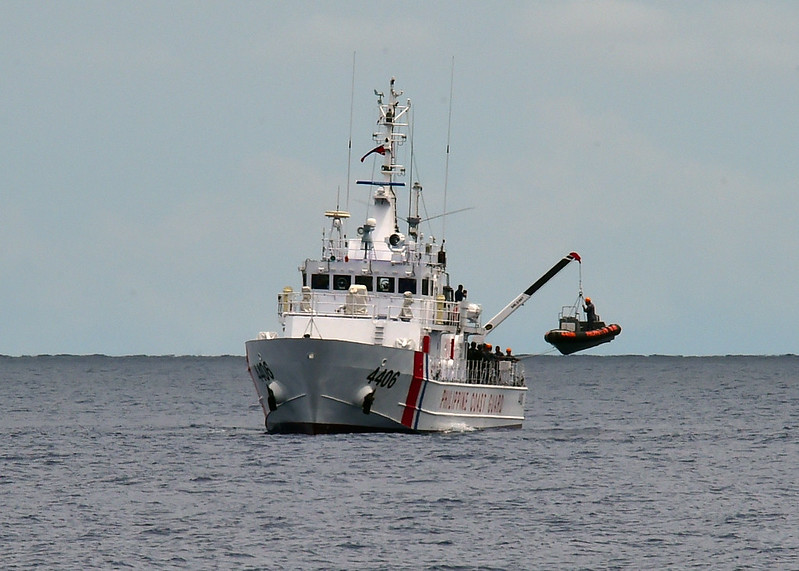Safeseas Research Associate Scott Edwards recently visited the Philippines and had the opportunity to assess some of the over-arching themes of Philippine maritime security focused upon by security practitioners.
The Philippines faces a large array of security issues, ranging from kidnappings that fund terrorist activities; piracy in an area in which over $40 billion dollars’ worth of cargo flows; trafficking of drugs, weapons and people; cigarette, alcohol and fuel smuggling; and illegal fishing which not only destroys marine habitats but also damages the economy of the Philippines.
At a policy level, however, the government and Navy mainly continues to focus on traditional areas of geopolitics – primarily concerned about China’s overlapping claims in the South of China Sea. This can divert attention from the need to address the wide array of transnational organised crimes at sea that take place in the waters of the Philippines.
The diversity of maritime threats also complicates enforcement. The Navy, Coast Guard, National Police Maritime Group, and National Coast Watch Center (NCWC) form the centre of a crowded web of institutions that are all mandated to contribute to various aspects of maritime security. The thing that unifies them is that all are primarily concerned over their lack of capability, mainly understood as physical assets. Lobbying for greater resources is often difficult and maritime security budgets remain dominated by the Navy. In consequence, members of the Coast Guard and Navy have suggested education and advocacy are required to raise awareness of the scope of maritime security issues. So far, this has been done through a Maritime and Archipelagic Nation Awareness month, led by the National Coast Watch Council.

There is recognition from all agencies involved that more efficient cooperation could assist in mitigating the capability gap through the pooling of resources. However, there continue to be challenges of coordination and some confusion over over-lapping roles. The Navy and Coast Guard were separated in 1998, and often find themselves in competition over resources. This can lead to a lack of transparency and sometimes tension between the two agencies.
Recently, there have been some promising movements concerning coordination despite these issues, and there is a sense of optimism amongst the agencies that relations are heading in the right direction. Two developments in particular stand out.
First, a National Coast Watch Centre (NCWC) was implemented in 2015 to act as point of contact for maritime security coordination. While the NCWC currently lacks ‘command’ potential (compared, for example, to neighbouring Thailand’s Maritime Enforcement Command Centre (MECC)), it has the potential to enhance inter-agency coordination by serving as both a focal point and source of knowledge concerning the Philippine’s territorial waters. The NCWC operates an expanding Coast Watch System, which forms the core of the Philippine’s Maritime Domain Awareness through coastal surveillance.
Second, an inter-agency protocol has been drafted with the intention of further facilitating cooperation. This is perceived as being a significant step towards defining different agency responsibilities in Philippine’s maritime security, though if it falls short of a full national maritime strategy.
International cooperation around maritime security has also become an important focus for the Philippines. The Coast Guard has led initiatives including the ‘Contact Group’ on maritime crime in the Sulu and Celebes seas co-hosted by the UNODC Global Maritime Crime Programme and bringing together maritime security actors from across the region, and also signed a Memorandum of Understanding with the Indonesian Maritime Security Agency (BAKAMLA). A Trilateral Cooperative Agreement between Malaysia, Indonesia and the Philippines, incorporating coordinated patrols in the Sulu-Celebes seas and information-sharing, is also maturing despite ongoing sovereignty disputes.
As a result of these initiatives, there is an increasing, yet still cautious, optimism that despite expected capability gaps in terms of assets, the Philippines will be able to better achieve maritime security if it continues to strengthen coordination both domestically and internationally.
Members from the Maritime Group, NCWC, Navy and Coastguard have all argued that the most important future step would be a maritime security strategy that clearly identifies the problems and priorities of Philippines maritime security and then delineates the roles of the various maritime agencies within this. This would assist in bringing forward wider maritime security issues beyond geopolitics. It would also have the potential to ease some existing obstacles to coordination by demonstrating nodes of common interest, establishing areas of responsibility and offering and a clearer basis for action going forward.
For a PDF of the commentary please click here

1 thought on “Growing, yet cautious, optimism – maritime security in the Philippines”